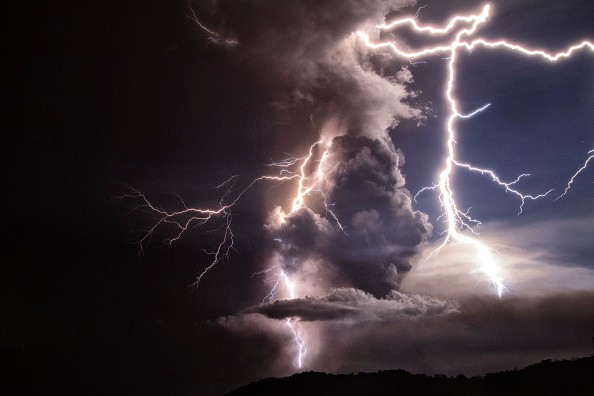After narrowly surviving a lightning strike earlier last month, a security guard in Indonesia considers himself blessed to be alive.

The rain poured at a depot in the seaside village of Cilincing in North Jakarta, Indonesia, on Dec. 20 when Abdul Rosyid (35) was on patrol. A bolt of lightning struck Rosyid's umbrella out of nowhere while he was strolling.
Lightning Strike

The moment lightning struck Rosyid's umbrella was recorded on video. Rosyid was knocked to the ground as the lightning melted the umbrella and caused an explosion of sparks. The incident's film may be seen at the top of this post, although it's not easy to see.
His comrades hurried to his side and brought him to a local hospital, where he was treated for burns to the hand holding the umbrella as the security officer lay motionless. He was miraculously dismissed after only four days.
It's a common misconception that having an umbrella invites lightning. Metal does not attract lightning, but it may conduct lightning, according to an article published by Real Simple, which refuted the myth with National Weather Service Meteorologist and Lightning Safety Expert John Jensenius.
Related Article : Scientists Uses AI to Create Better Lightning Forecast Models
How Exactly Does Lightning "Strike"?
The electric discharge from the clouds can pass through the umbrella's metal rod, causing the person carrying it to be electrocuted. "Metal doesn't attract lightning," according to Real Simple, "even a lightning rod doesn't attract lightning; it can only conduct lightning if a bolt strikes nearby. People who are zapped while carrying a golf club or listening to an iPod are merely in the wrong location at the wrong time."
Electrical imbalances between the clouds and the Earth generate lightning. Every second, about 100 cloud-to-ground bolts impact the Earth, each of which contains up to a billion volts of power. A person's risk of being hit by lightning is determined by various circumstances, including where they are when struck and even the quantity of water on their skin. Whenever lightning strikes someone, most of the electricity flashes across their skin's surface, with only a tiny percentage entering their bodies.
Jensenius previously told AccuWeather, "It's such an overwhelming amount of energy that not all of it can flow through the human." "It's like attempting to pour a gallon pail of water through a straw in three seconds."
Relative Danger
According to the NWS, the actual danger of getting struck by lightning is relatively low, with one in 15,300 people being struck in their lifetime (calculated at 80 years). When lightning is a threat in your region, experts advise keeping aware and adopting adequate safety steps.
© 2025 NatureWorldNews.com All rights reserved. Do not reproduce without permission.





